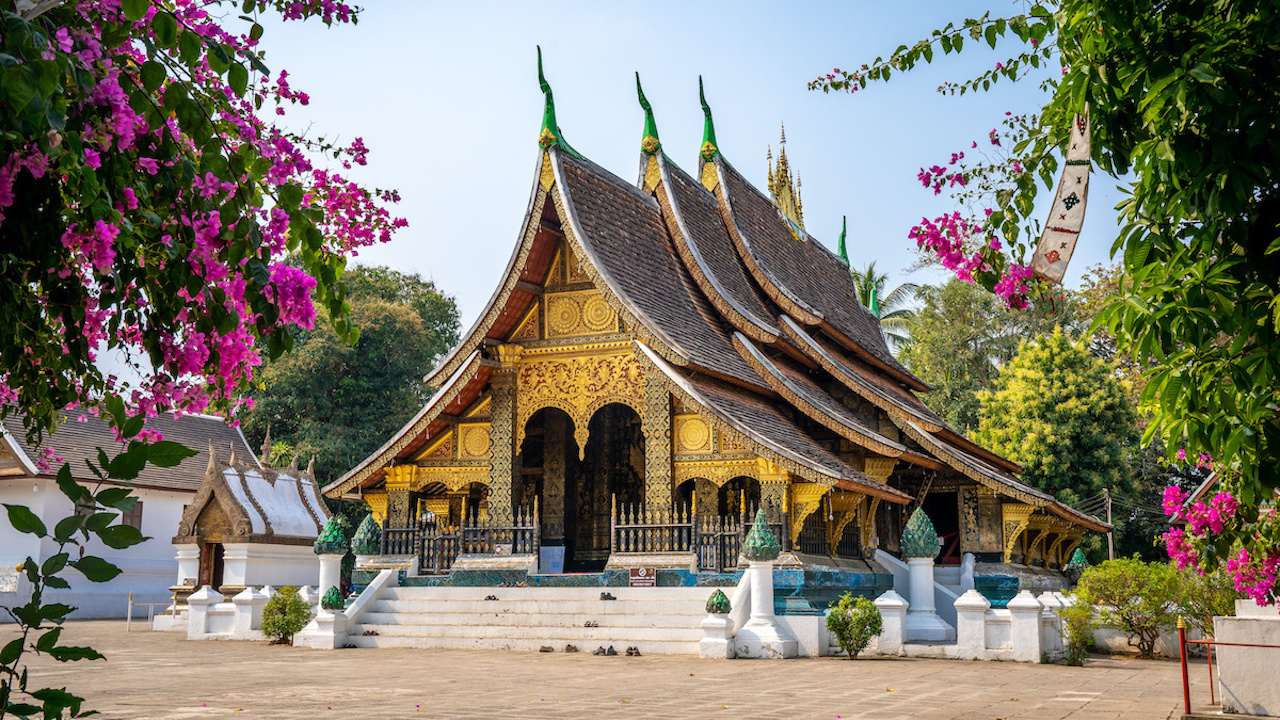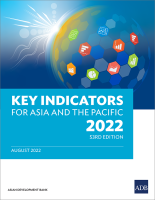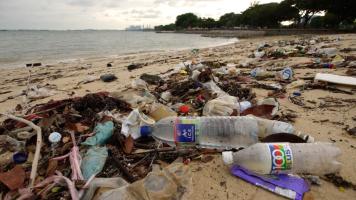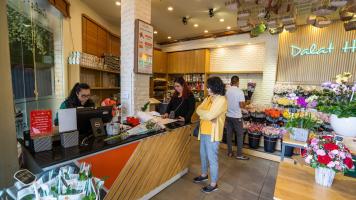In Luang Prabang, Creating a Future Where the Past Thrives

Communication Expert, Ramboll

Luang Prabang aspires to become a livable heritage city for all. Photo credit: Courtesy of Ramboll/Adobe Stock.
Using smart solutions, an ADB-backed project is helping future-proof the city to preserve its rich history and culture, while catering to the needs of residents and visitors.
This article is published in collaboration with Ramboll.
The vestiges of a bygone kingdom can be hard to protect in a world enamored with sprawling cities, artificial intelligence, and unbridled growth. In Luang Prabang, a city nestled in the northern part of the Lao People’s Democratic Republic (Lao PDR), there sits a UNESCO World Heritage Site—so deemed for its unique combination of traditional Lao architecture, the remains of a French colonial era, and a rich Buddhist culture. Luang Prabang is steeped in living heritage practices and has a tropical tranquil landscape that includes the Mekong and Nam Khan rivers. Because of these, the city used to draw hundreds of thousands of tourists per year; until the COVID-19 pandemic hit.
Today, Luang Prabang is recovering and attempting to lure visitors back, especially with the new high-speed rail connecting Lao PDR with the People’s Republic of China. While this means tourism could once again provide economic opportunities, it could also lead to overcrowding and other negative impacts that typically come with mass tourism.
In some villages, contending with the departure of local residents, homes being replaced with more commercial spaces, littering, poor sanitation, and road congestion are key issues.
Leveraging on smart solutions
The ASEAN Australia Smart Cities Trust Fund (AASCTF)—administered by the Asian Development Bank (ADB), financed by the Government of Australia, and implemented by Ramboll—is supporting Luang Prabang to prepare the Luang Prabang Smart and Integrated Urban Strategy. The strategy aims to guide Luang Prabang’s urban growth in a holistic, people-centered, sustainable manner without compromising its distinct heritage through the use of smart solutions.
The strategy complements the proposed ADB-financed Urban Environment Improvement Investment Project’s $45-million concessional financing package, which will improve the quality and coverage of urban infrastructure and services, promote inclusive urban planning, and strengthen women’s leadership roles in urban and tourism management.
Preparing the strategy followed a three-stage process, consisting of an urban assessment, developing urban scenarios, and preparing the actual integrated strategy. The three reports produced through this process are based on a thorough examination of the city’s current challenges, looking at the different sectors that affect the workings of the city and people’s way of life (including the vulnerable and marginalized); consultations with various stakeholders, collecting inputs and experiences of government officials, community leaders, as well as entrepreneurs and women working in the night market; and forecasting possible population and visitor growth projections to determine the land, infrastructure and service needs through 2040.
Luang Prabang aspires to become a livable heritage city for all. An indispensable part of the strategy is the list of 50 smart city interventions that could advance this ambition. Six pilot projects were selected following the prioritization framework developed with the strategy. The pilot projects include a dynamic ticketing system for Phousi Hill (one of the most popular sites in Luang Prabang), heritage signboards with QR codes in key locations, installing gross pollutant traps to address clogged drains and flooding, smart septic tanks (particularly in residential areas that have been converted to commercial space within the Heritage Site area), pedestrianization or implementation of a car-free street, and having park-and-ride facilities.
“In a survey we conducted with more than 200 stakeholders, the top three priorities identified for Luang Prabang are having a vibrant local living heritage and culture, green spaces and nature, and an environmentally friendly or sustainable lifestyle,” shared Wang Wei, then AASCTF Luang Prabang task team lead and director for resilient cities in Ramboll Singapore. “The pilot projects we are recommending are aligned with these priorities and the three pillars under the strategy. They will help Luang Prabang become a more livable heritage city and have an immediate positive impact on the city’s long-term urban development trajectory.”
Results and impact
The strategy underscores the importance of thinking ahead, future-proofing a city to preserve its rich history and culture, and catering to the needs of residents and visitors.
The use of smart systems, whether for ticketing and managing crowds or simulating traffic conditions to improve mobility and flow around the centuries-old historic town, will enhance the benefits of improved spatial planning and the development of a comprehensive geographic information system (GIS).
The GIS, utilizing an improved data management and governance framework with updated institutional arrangements and responsibilities, will in turn facilitate better data sharing and evidence-based decision making to help Luang Prabang achieve its aspiration to become a livable heritage city for all.
Six Potential Pilot ProjectsThe Luang Prabang Smart and Integrated Urban Strategy has three strategic pillars to achieve the ambition of a livable heritage city for all. These pillars entail (i) developing an integrated tourism and heritage destination, (ii) ensuring clean and safe environment, and (iii) hewing to the sustainable village; and 15-minute city concepts. Each pillar has specific strategic objectives, activities, and smart city projects—and these include the six pilot projects proposed in the strategy. The dynamic ticketing system for Phousi Hill and the heritage signboards with QR codes are two projects under Pillar 1, which seeks to create a sustainable destination that protects and leverages the built, natural, and intangible cultural heritage of Luang Prabang. A timed ticketing system can better control visitor numbers and can also provide a live feed of the tourist attraction so tourists can plan their visit. This will improve visitor experience on Phousi Hill and reduce negative impacts on this religious site and local heritage. Meanwhile, the heritage signboards will allow tourists to appreciate different parts of the World Heritage Site and also help local authorities to demarcate boundaries. The QR codes can link to multi-language information to ensure accessibility. Pillar 2 includes the projects with gross pollutant traps and the smart septic tanks. Both will help manage waste and improve sanitation. Further, the smart septic tanks will have sensors that alert owners of abnormal water levels and septic tank overflow, which can lead to improving water quality in water bodies around Luang Prabang as well as reduce risks to public health. The projects for pedestrianization and park-and-ride facilities are covered under Pillar 3, which aims to have ease of movement in the city, including walking and cycling, and ensure villages are self-sustaining, such that all residents can live, work, play, and enjoy public spaces. With the pedestrianization project, a traffic microsimulation will be conducted to verify if the street is suitable as a car-free street, determine the length for pedestrianization, and assess the impacts on surrounding streets so solutions can be explored to mitigate any impact. |

Elga Reyes
Communication Expert, RambollElga Reyes has been working in the sustainability and international development sectors for nearly a decade. Prior to Ramboll, she served as a communications consultant for the Asian Development Bank (ADB).

Ramboll
Ramboll is a global engineering, architecture and consultancy company with more than 18,000 experts that create sustainable solutions for governments and companies all over the world.


